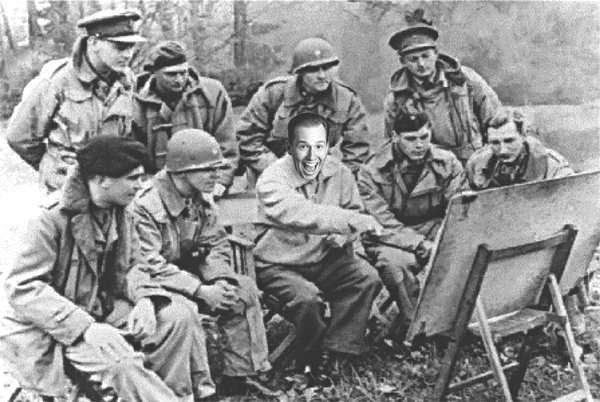.jpg)
If you have questions, feel free to email me at Jeff@TheWarGame.com

Found this old classic and thought you might like a sail down memory shipping
lane.
So, go ahead and take two minutes from your life you'll never get back.

Errata
To avoid errata, just download the Basic 1942 Second Edition rules
Unfortunately, the Chinese printers used an older file when
printing the rulebook, which resulted in a few errors making the final edition.
I knew it instantly.
See, for money-saving reasons, the rules had to be done in B&W (the same reason
all pieces are German - to prevent a $250 retail price), and when I
learned that, I went through the book and adjusted the contrasts to make
everything read better in B&W. In that process, I corrected the sentence
structure
and some errors, but alas they didn't make the final cut. Anyway, here are
the ones that have been discovered so far:
Page 30:
Error, with correction underneath
-
Two fighters and one destroyer attack German destroyer in NA-8, then
pass-through to attack German destroyer in NA-5 (would arrive on round 1, but
not roll until round 2)
-
Two fighters and one destroyer attack German destroyer in NA-8, then
pass-through to attack German
submarine in NA-5 (would
arrive on round 1, but not roll until round 2)
Page 33:
The Waffen SS additional unit has a move of "1", NOT "4". It's a horrific
typo, indeed.
Pages 2, 8, 33 and box bottom-side:
The graphics for the Bf 109 G6 and Fw 190 D-9 are all mistakenly swapped (at
least we were consistently backwards). The smaller, leaner, rounded-winged
fighter is the Messerschmidt (Bf 109 G6), and the bigger, more square-winged
fighter is the Focke-Wulf (Fw 190 D-9). Another big duh.
.jpg)
Tournament Rules and Structure
Applicable game rules in this tournament:
Two Round Tournament Structure:
An even number of teams, of 1-3 players each, are submitted, then randomly matched against other teams. Half of the teams are randomly assigned to play Axis, the other half Allies.
ROUND ONE:
ROUND TWO:
Time Limits:
Every table will be provided with a chess clock (left clock for the Axis team
and right clock for the Allied team). Upon the completion of each turn,
the player would flip the clock to the opposing team. Also, should an
opponent delay a decision more than 10 seconds during your turn. you may hit the
clock to accrue time on their side, rather than yours. For example, if a
player has begun a battle and asked the defender to declare any retreats, that
defender has 10 seconds to make that decision, or the attacker can flip the
clock until that decision has been made to accrue time on the defender, rather
than adding it to the attacker's turn.
Time Penalties:
One of two methods implemented depending upon tournament venue conditions and
time frames.
1. Each side gets 4 hours of play time.
For every ten minutes beyond 4 hours, the team is penalized 2 points on the
command score.
2. The Axis team and the Allied team that
expends the most time in their game is penalized 20 points each on their command
scores.
Disputes:
The designated judge will resolve all disputes with full authority. However, if
a judge is also playing in a tournament game, disputes therein will be resolved
by a majority vote of three players not involved in the disputed game, who have
heard each side’s contention.
Coming Soon!
Invitational Tournament Registration
Rankings
![]()